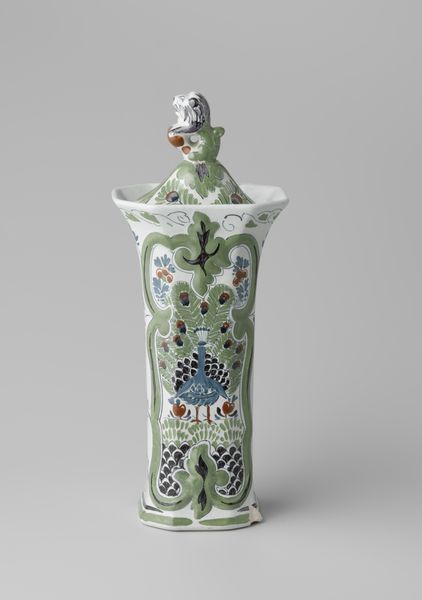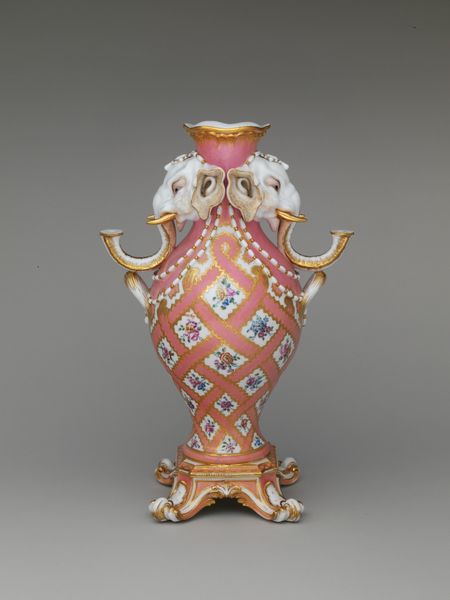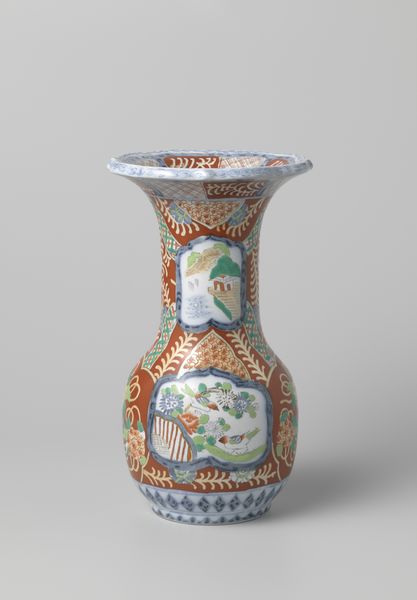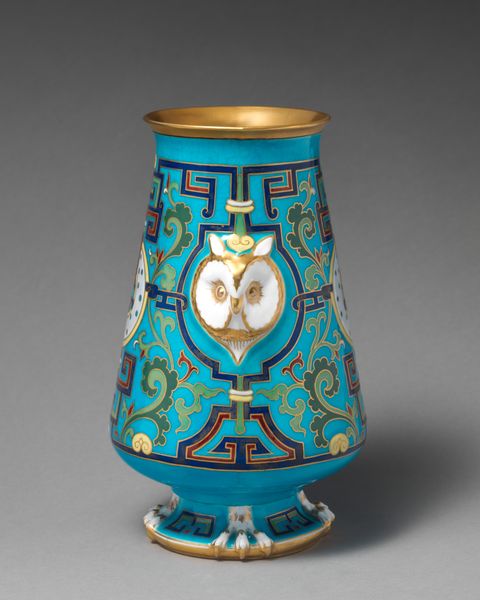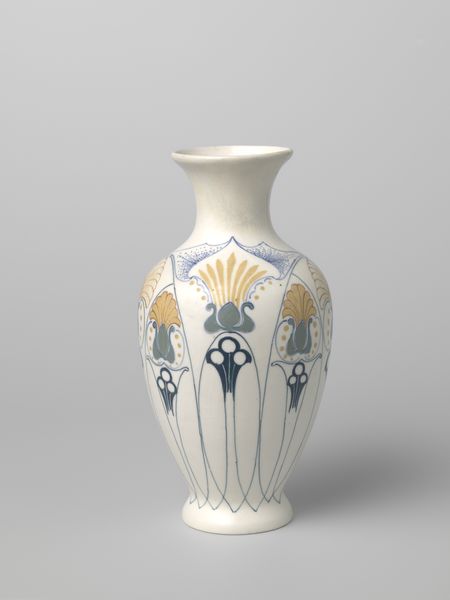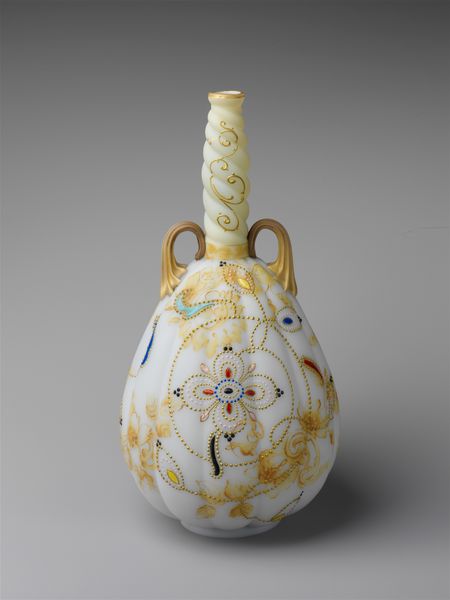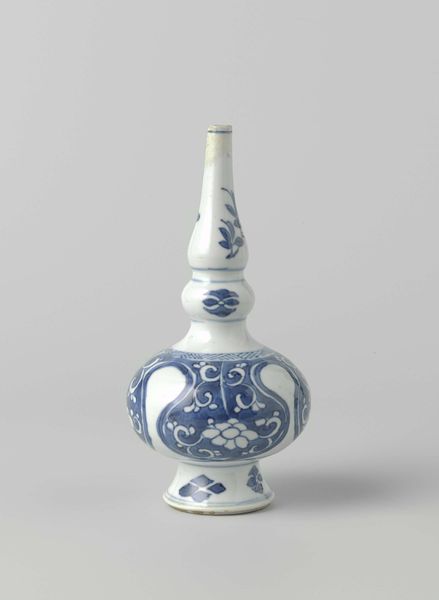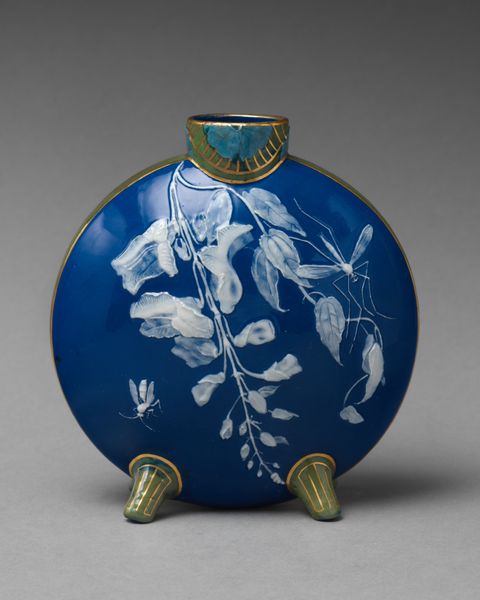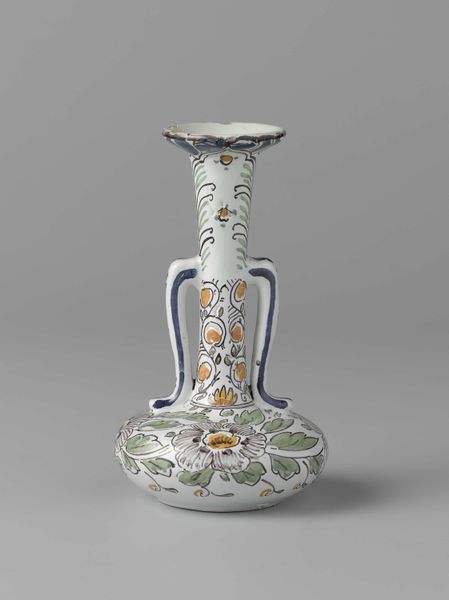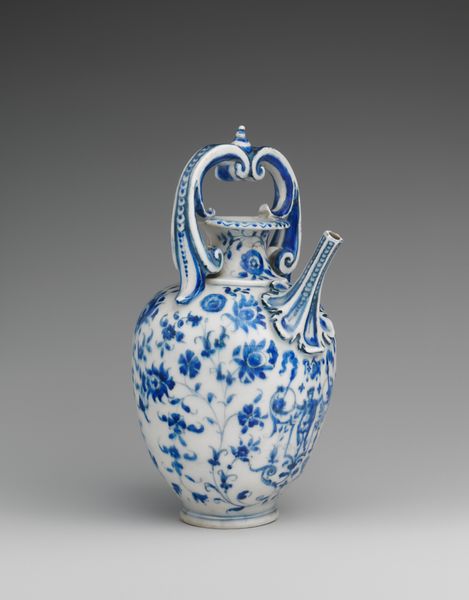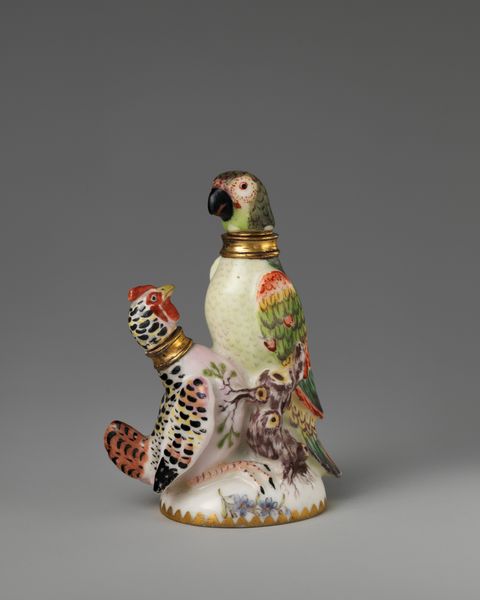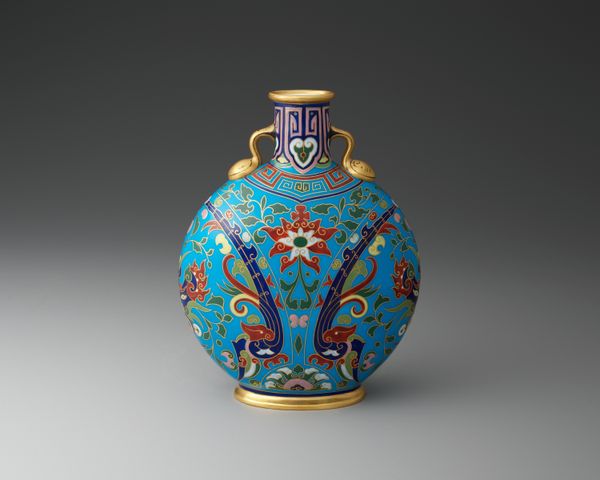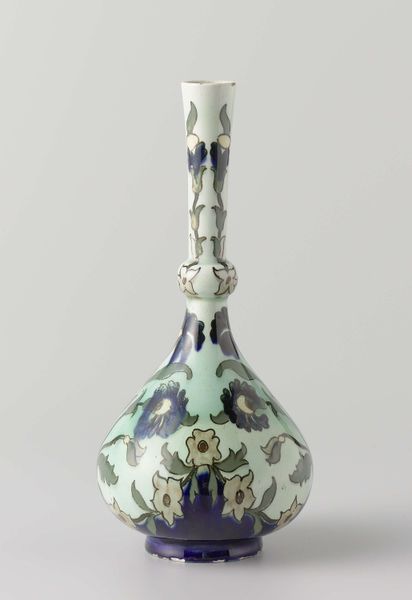
ceramic, earthenware
#
art-nouveau
#
dutch-golden-age
#
ceramic
#
earthenware
#
decorative-art
Dimensions: height 25.5 cm, height 15.4 cm, diameter 8.1 cm
Copyright: Rijks Museum: Open Domain
Editor: This vase, created by N.V. Haagsche Plateelfabriek Rozenburg in 1886, is crafted from multicolored-painted earthenware and adorned with flower motifs. The floral design gives it a charming feel, reminiscent of sunny meadows. How would you interpret this type of decorative artwork from a historical point of view? Curator: This vase represents an interesting intersection of movements. The decorative arts flourished in the late 19th century, fueled by industrial production and a burgeoning middle class eager to display its newfound wealth. It reflects a societal shift towards accessible art and beauty for the home. What is most fascinating about this piece is its blending of styles. Editor: You mean how it seems to incorporate the Dutch Golden Age despite it being Art Nouveau? Curator: Exactly. While Art Nouveau is evident in the floral motifs and sinuous lines, the Dutch Golden Age's influence surfaces in the object's overall structure and detailed artistry. The Hague was home to various ceramic manufacturers that competed fiercely with each other, especially concerning new artistic trends. How might this context inform your reading of this vase? Editor: Well, maybe the maker used these accessible "traditional" forms of beauty in this vase to communicate status in a more "common" visual language of that era? Curator: Precisely. Understanding this intersection tells us not only about artistic preferences, but also about class distinctions and how art served as a marker of social identity. It's also a reflection on what kind of art was valued by the museum-going or gallery-viewing public. Editor: I hadn’t considered the vase as a symbol of social class. It gives a much deeper understanding of decorative art from that period! Curator: Absolutely! Recognizing that the object and period serve as a dynamic meeting point reveals deeper contexts, social status, public and institutional artistic preferences, as well as how artistic choices mirrored and influenced a wider society.
Comments
No comments
Be the first to comment and join the conversation on the ultimate creative platform.

